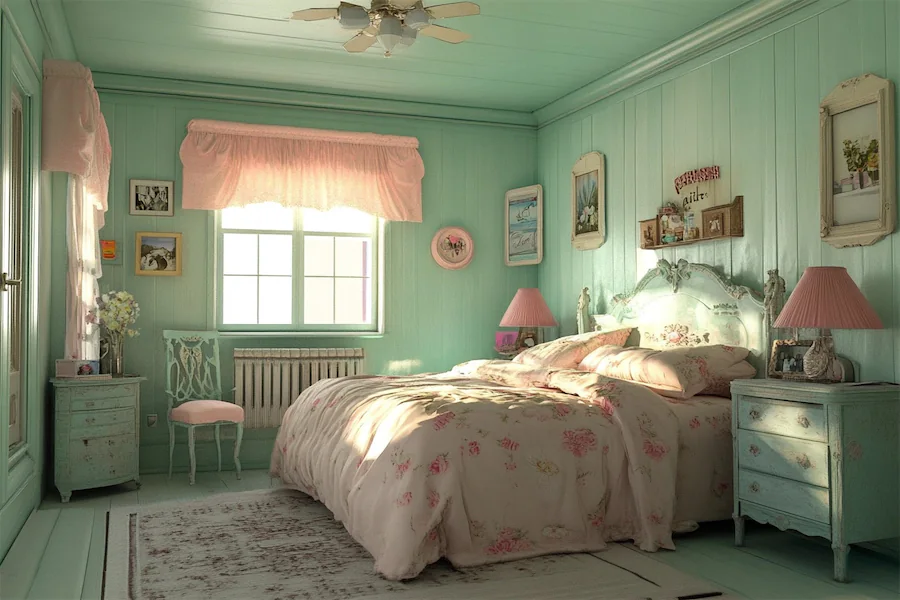A pastel bedroom design incorporates soft, muted colors—such as light pinks, blues, greens, and lavenders—to create a serene and inviting atmosphere.
Introduction to Pastel Bedrooms
Pastel bedrooms utilize gentle hues to establish a calming and airy environment. These colors are versatile and can be adapted to various design styles, from modern to vintage, offering a tranquil retreat within the home.
History and Origins of Pastel Bedrooms
Pastel colors have been associated with interior design since the 18th century, notably during the Rococo period, which emphasized lightness and elegance. In contemporary design, pastels are celebrated for their ability to brighten spaces and evoke a sense of calm, making them popular choices for bedrooms.
Key Features of Pastel Bedrooms
- Soft Color Palettes: Incorporate shades like blush pink, mint green, baby blue, and lavender to create a soothing ambiance. These colors can be applied to walls, bedding, and decor to establish a cohesive look.
- Layered Textures: Combine different materials such as linen, cotton, and wool in pastel tones to add depth and comfort to the space. Textured throw pillows, area rugs, and curtains can enhance the room’s coziness.
- Complementary Accents: Pair pastels with neutral tones like white, beige, or gray to balance the color scheme. Introducing natural elements, such as wooden furniture or greenery, can add warmth and contrast.
- Minimalist Decor: Opt for simple and functional furnishings to maintain an uncluttered look, allowing the pastel colors to stand out. This approach emphasizes tranquility and openness in the bedroom.
- Artistic Wall Treatments: Consider pastel-colored wallpapers with subtle patterns or paint techniques like ombre to add visual interest without overwhelming the space. Accent walls can serve as focal points while maintaining a serene atmosphere.
Applications of Pastel Bedroom Design
- Master Bedrooms: Create a peaceful retreat by incorporating pastel hues that promote relaxation and restful sleep. Soft blues and greens are particularly effective in fostering a calming environment.
- Children’s Rooms: Utilize playful pastel colors to craft a cheerful and soothing space for children. Pastel pinks, yellows, and purples can add a whimsical touch suitable for a child’s bedroom.
- Guest Rooms: Design an inviting space that appeals to various tastes by using a pastel palette, ensuring comfort for all guests. The versatility of pastels makes them suitable for accommodating diverse preferences.
Considerations When Designing a Pastel Bedroom
- Balance: Ensure a harmonious mix of pastel shades and neutral colors to prevent the space from feeling overly saccharine. Incorporating darker accents can add depth and sophistication.
- Lighting: Maximize natural light to enhance the softness of pastel colors. Use sheer curtains to allow light to filter through, and consider warm-toned artificial lighting to maintain a cozy atmosphere in the evenings.
- Personal Touches: Add decor that reflects your personality, such as artwork or decorative items, to make the space uniquely yours while maintaining the pastel theme. Personal mementos in complementary colors can enhance the room’s individuality.
Conclusion
Designing a pastel bedroom involves thoughtful selection of colors, materials, and decor to create a space that exudes tranquility and charm. By focusing on a cohesive pastel color palette, incorporating layered textures, and adding personal touches, you can craft a bedroom that serves as a peaceful retreat tailored to your individual style.
